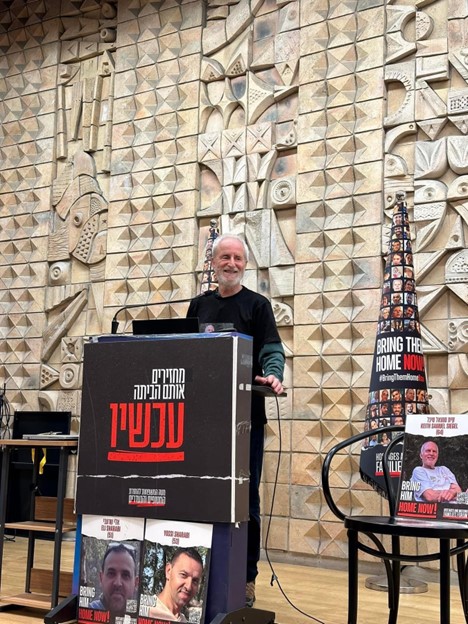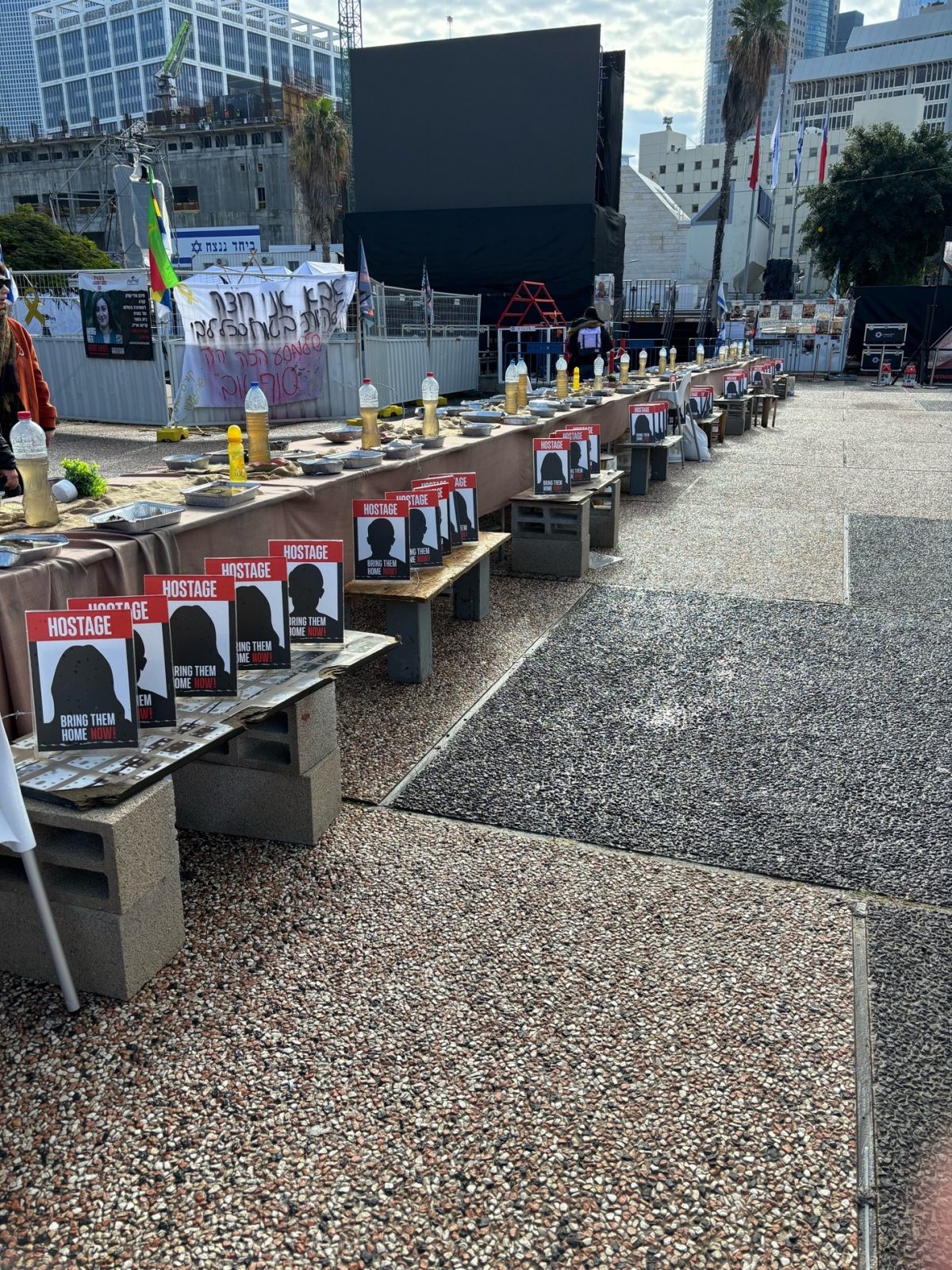Rabbi Estelle Mills, who leads Plymouth’s local synagogue, Congregation Beth Jacob, last week traveled with a group of more than 30 rabbis from around the U.S. on a solidarity mission to Israel. Mills is touring several parts of the country on the 10-day trip and will share some of her experiences on the Plymouth Independent site. This is her third journal entry.
Sunday began with making my way from the bubble of Shabbat and family to Tel Aviv to meet up with both my American and Israeli colleagues. The day was uncharacteristically stormy and the turbulence of the Mediterranean Sea on the usually beautiful Tel Aviv beachfront matches the atmosphere of the nation. As I greeted my colleagues, it was not with the normal excitement about traveling and studying together that is so characteristic of the many previous trips I have made to Israel. We all know that we will be seeing and hearing about nightmarish events in the next seven days and yet this is the reality of Israel today. As we set off from the hotel filled with families who are refugees in their own country, our tour guide advises us: “Everyone of us is on the front line. You don’t know by looking at someone what they’ve been through.”
Our first stop is Hostage Square, an area in front of the Tel Aviv Museum where there are tents set up for each city, kibbutz (communal settlement) or moshav (semi-communal settlement) that Hamas terrorists infiltrated on Oct. 7: murdering, raping, burning alive, dismembering, and taking hostages. Many hostage family members and survivors sleep in those tents together, for as one shared, “It is better to be together than waiting in a destroyed home alone.”
Hostage Square has become a place where the survivors, the frantic and worried family members, and a grieving country can come for support, to hear news, to shed tears, and to hope, pray, and scream in frustration about their loved ones, friends, and neighbors who remain hostages under inhumane conditions for over 115 days. A large electronic clock keeps track of the minutes since the captivity began. There is a set Shabbat table running the length of the large square filled with food and drink that remains untouched and each chair has the name and face of a hostage. Additionally, a “tunnel” an artist erected is filled both inside and outside with graffiti messages of love and support for those in captivity. As you walk through the long, dark tunnel, modeled after the tunnels in Gaza, the sound of gunfire and missiles being piped in is unnerving and one can only imagine the terror of the hostages walking through the real tunnels that morning, many still in pajamas and without shoes.
Hostage Square has also become home to many displays that showcase the individuality of the hostages: a piano to recall an inspiring musician, a Bedouin flag and tent as a reminder that not only Jews were kidnapped that morning, a highchair for a baby who hopefully has survived in captivity to reach his first birthday.

From Hostage Square, we made our way to the office building that houses the Hostage and Missing Family Forum Center where Lee Siegel, who grew up in North Carolina as I did, shared the story of his family members taken captive on Oct. 7 from their homes on one of the infiltrated kibbutzim. His sister-in-law Aviva was released on Day 47, but his brother, Israeli-American Keith Siegel, remains a hostage in Gaza. Lee conveyed his frustration and despair that the Red Cross has yet to be given access to his brother and the other hostages and his mounting impatience that another deal to release more hostages has not yet been reached.
“From suffering to healing and hope for healing,” a colleague said as our day continued with a visit to the Sagol center for hyperbaric medicine at the Shamir Medical Center in Petach Tikvah, the largest hyperbaric chamber in the world. We learned about the success of this cutting-edge medical procedure healing those suffering from PTSD. Our group was the first granted access to see the project, which is the brainchild of Dr. Keren Doenyas-Barak and Dr. Shai Efrati. The hyperbaric chamber triggers healing mechanisms as it increases oxygen level in brain tissues. Primarily tested on soldiers since Oct. 7, former hostages and soldiers can also reap the benefits gained from healing what was previously considered non-healing wounds of the brain.
As we left the clinic, driving back past Tel Aviv toward Haifa, we grew fearful as red alert sirens sounded (as well as warnings appearing on the app we had installed on our cell phones). Our bus pulled off the road and we were told to duck down so our heads were below window level. After hearing the pops of the iron dome doing its job and intercepting the missiles, we continued to Haifa with the vivid reminder that we were indeed visiting a country at war.
Our Israeli colleagues, exhausted from the funerals, condolence calls, and non-stop counseling, joined us for dinner and we were able to express our support for all they are doing. Our day (which seemed more like a week) ended with a meeting with Rabbi Gilad Kariv, the first Reform rabbi to serve as a Member of Knesset. Gilad’s analysis of the current situation compared October 7 to Israel’s 1948 struggle for its existence, a stark comparison that aptly concluded an emotional day.

